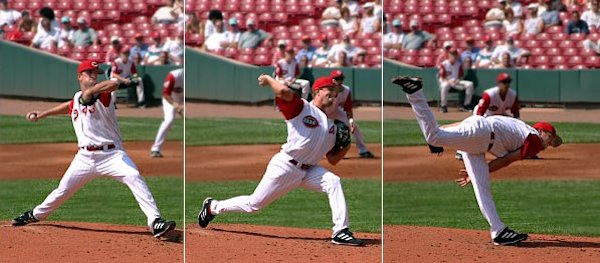Dear Sports Fan,
What is a balk in baseball? I think it’s when a pitcher starts to pitch but then doesn’t but I’ve asked a few friends I have who are baseball fans and no one can explain it more clearly. Can you help?
Thanks,
Jeff
Dear Jeff,
The balk is one of the most unique rules in baseball. It’s controversial, important, and simultaneously confusing to the point of opaqueness. Reading Major League Baseball’s rulebook on the subject is almost entirely useless for anyone who doesn’t already know what a balk is. For example, here is a short passage on what constitutes a balk:
From the Windup Position, the pitcher may:
(1) deliver the ball to the batter, or
(2) step and throw to a base in an attempt to pick-off a runner, or
(3) disengage the rubber (if he does he must drop his hand to his sides).
In disengaging the rubber the pitcher must step off with his pivot foot and not his free foot first.
He may not go into a set or stretch position if he does it is a balk.
There’s only one response to language like that, and Groucho Marx said it over 80 years ago.
Luckily, we don’t need to understand the particulars of the rule as it’s written to understand how the rule works in actual baseball. We can work our way backwards from what the rule is trying to prevent to how it’s actually enforced.
The balk rule was put in place in 1898. Before then, a pitcher could get a base runner out in the following way. Imagine there’s a runner on first base. He takes a short lead toward second base and waits there. As the pitcher starts his windup to pitch the ball, the base runner takes one or two steps farther toward second base. This is a smart move, because it puts him in a better position to get to second base on a weakly hit ball and it still leaves him with plenty of time to return to first in the case of a strike or a pop fly. However (!) the pitcher hasn’t actually pitched. Instead, he’s tricked the base runner by winding up and starting to throw the ball but not actually letting it go. Now that the base runner has moved further from first base, it’s easy enough for the pitcher to stop, turn, and throw the ball to the first baseman, who calmly tags the base runner out. Now, baseball prides itself on being a tricky sport, but it’s possible that this trick was simply too devious to allow. It’s also possible that the main problem was not the move’s deceptive nature, but its effectiveness. Rules have always been created to balance the power between offense and defense, and a move which is almost guaranteed to remove a base runner from the game may simply have been too effective to allow. In any event, the balk rule was put in place to prevent pitchers from doing this.
For all its complex language, the balk rule can be summarized as this – once a pitcher starts his pitching motion, he must complete it by throwing the ball to home plate. I italicized the word “his” because pitchers all have unique pitching motions. One pitcher’s motion may be as distinct from another’s as a lion is from a house cat. The motion itself is not important to the rule, what is important is that every pitcher’s motion during one pitch is identical to his own motion on every other pitch. Umpires learn pitchers’ motions and are able to notice if a pitcher deviates from it, even slightly. When a pitcher throws to first base, to hold a runner there, or to try to pick him off, he uses a motion that may be similar to his pitching motion, but is not identical. The umpire is able to distinguish a pick off throw motion from a pitching motion.
Although the balk rule exists to prevent a pitcher from intentionally tricking a base runner by starting to pitch and then doing something else, the rule is enforced slightly differently. Most sports rules try to stay away from legislating intent and the balk rule is no different. In order to avoid asking umpires to make a judgement call about whether the pitcher intended to trick the base runner and whether the base runner was actually fooled, the balk rule simplifies the decision. If a pitcher enters his pitching motion but does not complete it, a balk must be called. This results in some unfortunate accidents when a pitcher starts to pitch but slips or stumbles or is attacked by a fit of sneezing or bees. In any of these situations, the umpire should call a balk. Balks legislate action, not intent.
The penalty for a balk is that all base runners get to advance one base. If there was a runner on first, he goes to second. A runner on third would score. The only exceptions to this are if the balk also results in the batter reaching first base because of a walk or a hit batter. In this case, all the runners would advance anyway, so there’s no further penalty. If, in the process of the balk, the pitcher loses the ball and it goes flying somewhere, the base runners are allowed to try to advance more than one base, but they do so at their own risk and can be tagged for an out.
Thanks for reading,
Ezra

